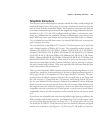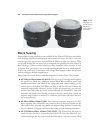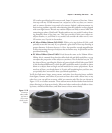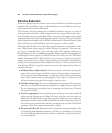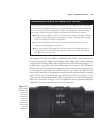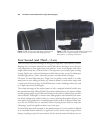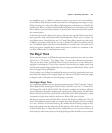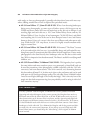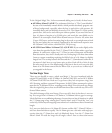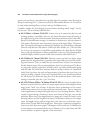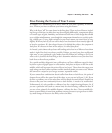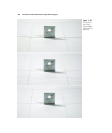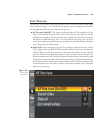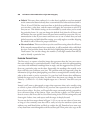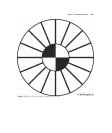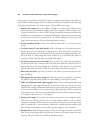To the Original Magic Trio, I often recommend adding one (or both) of these lenses:
■ AF Nikkor 85mm f/1.4D IF. The nickname of this lens is “The Cream Machine”
because of its remarkably smooth bokeh, which provides absolutely gorgeous out-
of-focus backgrounds, especially when the lens is used with a wide aperture. It’s
incredibly sharp, and can definitely be used at f/1.4. The 85mm f/1.4 is the perfect
portrait lens, and can be used wide-open without qualms. If you need this sort of
lens, it’s almost a bargain at its $1,000 price, and worth the extra $600 over its
85mm f/1.8 counterpart. Both Nikon 85mm lenses are D-series AF, rather than
G-type AF-S lenses, and are becoming long in the tooth, so you might want to look
for one now before they are entirely supplanted by the much more expensive new
AF-S 85mm f/1.4G version, which has a $1,700 price tag.
■ AF-S DX Zoom-Nikkor 10-24mm f/3.5-4.5G IF-ED. If you need a slightly wider
view than that provided by the Trio’s 17-35mm f/2.8, this lens makes a good sup-
plement. It could never replace my 17-35 fave in terms of sharpness and freedom
from aberrations, but, since I already own one, I’m keeping it for those times when
I want to capture something requiring the field of view of a 10-16mm (or slightly
longer) lens. The overlap between this lens and the 17-35mm doesn’t bother me; it
just means I don’t have to swap lenses quite as often. Each will do a little of what
the other one is best at. One disadvantage of this lens is that it won’t cover the full-
frame of an FX-format camera like the Nikon D3s, so you can’t use it effectively if
you upgrade in the future.
The New Magic Three
There are new sheriffs in town: a whole new Magic 3. Two were introduced with the
original D3 and D300: an AF-S Nikkor 14-24mm f/2.8G ED, and an AF-S Nikkor
24-70mm f/2.8G ED lens. Both are G-type lenses (they lack an aperture ring), have
AF-S focusing, and have constant f/2.8 apertures. In 2009, Nikon announced a replace-
ment for the 70-200mm VR lens, rounding out the Magic Trio with an all new lineup.
Like the original big three, these are all full-frame lenses that work with any DX or FX-
format Nikon camera.
The chief advantage of the new lineup (if you can call it that) is that there is no over-
lap. You can go from 14-24mm to 24-70mm to 70-200mm with no gaps in coverage.
I don’t find that an overwhelming advantage, because there are lots of situations in which
the 17-35mm range of my existing lens is exactly what I need; if I used the “new” trio
exclusively, I’d find myself swapping lenses whenever I needed more than a 24mm focal
length.
So, I now own both the new 14-24mm f/2.8 zoom and the old 17-35mm f/2.8 lens—
and I use them both about equally. The 14-24mm gives me a bit more wide-angle per-
spective than the 17-35mm lens, and it is fabulously sharp. I use the 17-35mm lens
when I think I’ll need the longer focal length, when I want to shoot semi-macro
Chapter 11 ■ Working with Lenses 383



